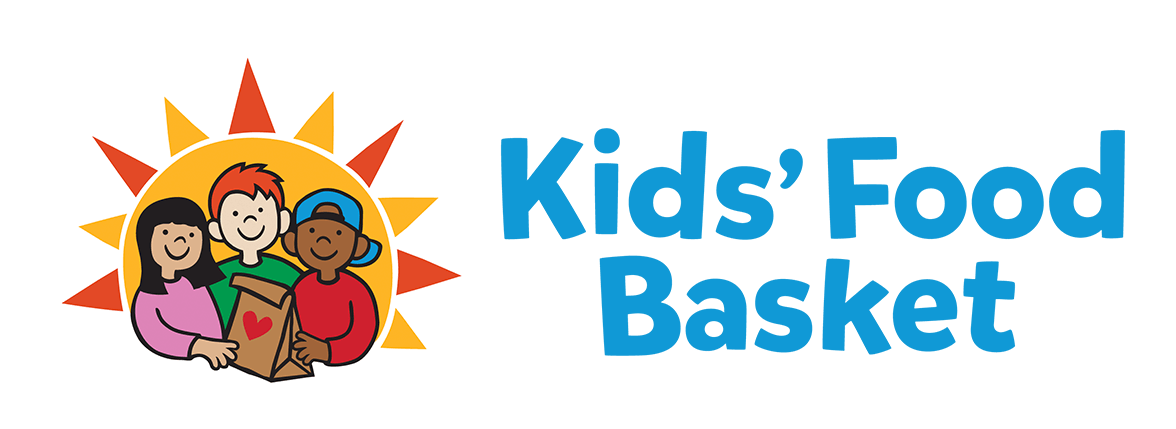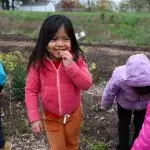This Pride month, we support our LGBTQ+ neighbors as we work toward increasing access to the healthy food that everyone deserves.
What does a conversation about Pride have to do with food insecurity? Unfortunately, research has shown that members of the LGBTQ+ community are more likely to experience food insecurity than their non-LGBTQ+ peers at nearly every stage of life. We must advocate for better.
Many children eat most of their weekday meals through school breakfast and lunch programs. However, a 2023 UCLA study found that school-aged children who identified as LGBTQ+ were three times as likely to be bullied by their peers, resulting in missed meals as many students avoided mealtimes to stay safe (1), often resulting in daytime hunger. This is one reason why having an equitable model of Sack Supper dispersal, like handing each child who leaves the door their Sack Supper, is so important.
Having an LGBTQ+ identity makes young adults more likely to not have enough to eat. In 2023, an estimated 703,000 LGBTQ+ young adults under 24 experienced food insecurity. This means nearly 14% of LGBTQ+ young adults did not have reliable nutrition (1). This is a time when the brain and body are still growing, and heathy food access is crucial.
Four years ago, when the pandemic saw increased barriers to food access and higher food prices, healthy food became further out for many. This included many LGBTQ+ people, who were more likely to experience food insecurity than their heterosexual counterparts. Trans people were the most vulnerable, with trans people three times more likely to experience food insecurity than their cisgender straight peers (2).
Barriers to food security have remained heightened for the queer community. A 2022 study found that LGBTQ+ individuals experience higher levels of food insecurity, poverty, unemployment and SNAP participation than their straight counterparts (2). This unacceptable trend affects too many neighbors today
These disparities exist in an ecosystem of systemic racism that adversely affects communities of color. Both black neighbors and queer neighbors are more likely to experience food insecurity (2), and for black queer people, that likelihood increases even more. In 2021, food insecurity was felt by 21% of black LGBTQ+ people, who were 45% more likely be food insecure than their white counterparts (2).
Food insecurity hurts. Our queer neighbors are more likely to experience a mental health disorder like anxiety or depression AND encounter food insecurity, and the combination of the two can be especially difficult (3). A 2022 survey found that food insecurity among LGBTQ+ individuals made mental health disproportionately worse, especially for people with anxiety and depression (3).
This isn’t right. We need a brighter, more food-secure future for our LGBTQ+ neighbors. Join KFB in our advocacy for food equity for all West Michigan children and families.
Let’s bring the bright colors that make us who we are together to make lasting change. We can do so much more, together.
Sign up to volunteer with us and come together in a space where all are welcome. Click here to find a shift that fits your schedule. We look forward to welcoming you, as you authentically are, to make memories and a difference with us.
- Macklin, M., Redfield, E., & Conron, K. (2023). Food Insecurity Among LGBTQ Youth. UCLA Williams Institute. escholarship.org/content/qt0x14x4qm/qt0x14x4qm.pdf
- Singh, G. K., Lee, H., & Azuine, R. E. (2022). Food Insecurity among Lesbian, Gay, Bisexual, and Transgender Adults During the COVID-19 Pandemic in the United States, July-October 2021. International Journal of Translational Medical Research and Public Health, 6(1). doi.org/10.21106/ijtmrph.413
- Morales, D.X. (2024). The Mental Cost of Food Insecurity among LGBTQ+Americans. Popul Res Policy Rev 43 (34). doi.org/10.1007/s11113-024-09881-8



